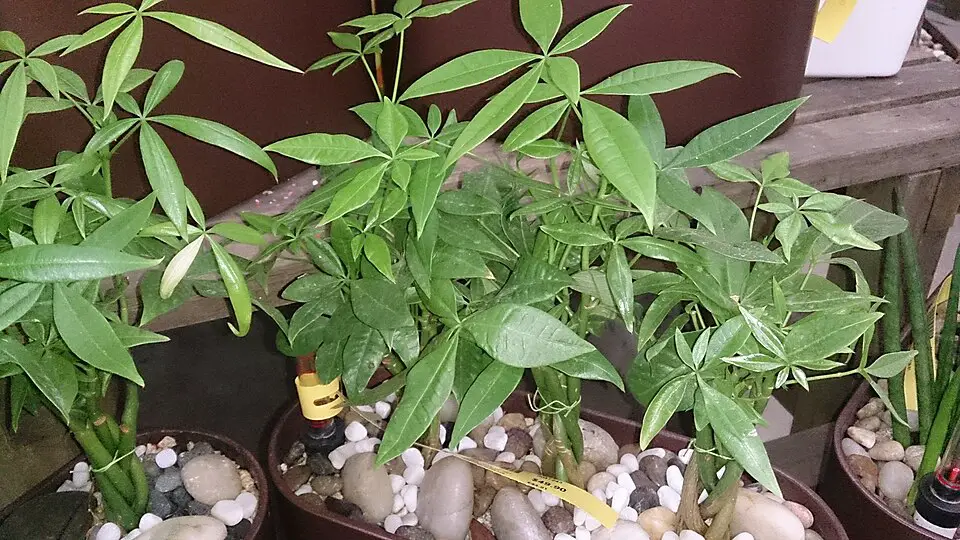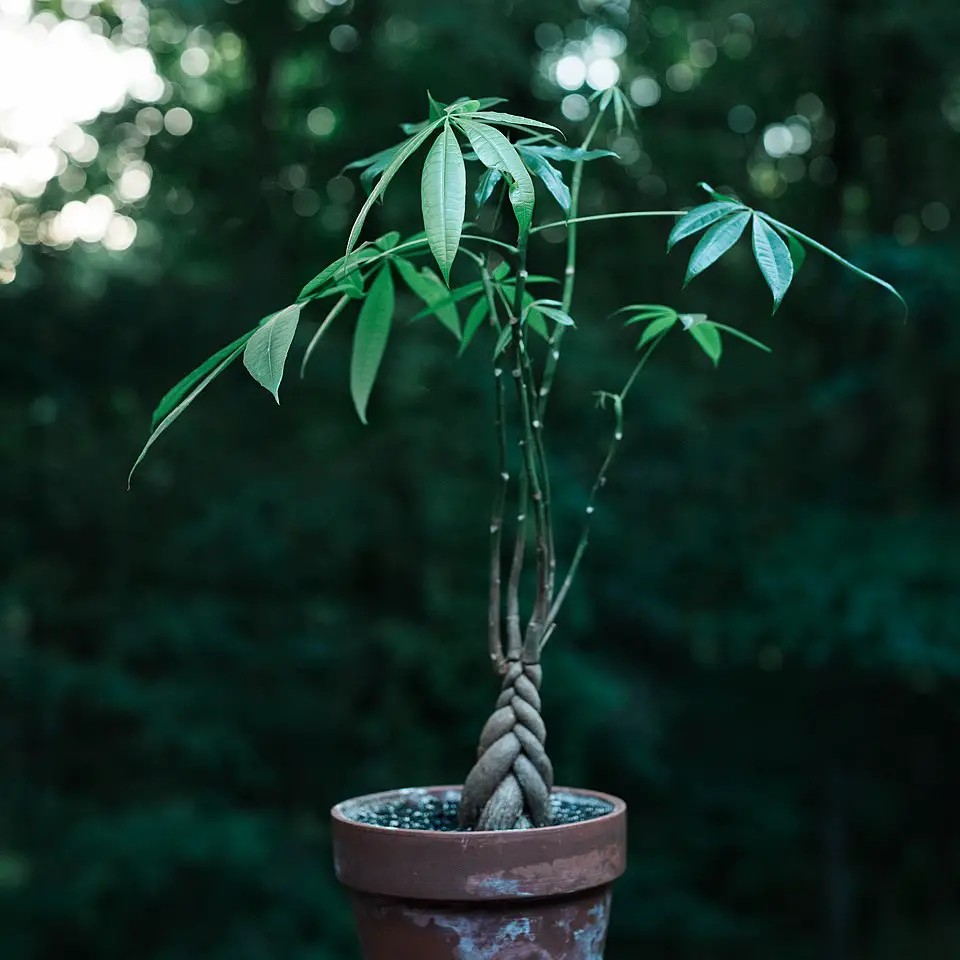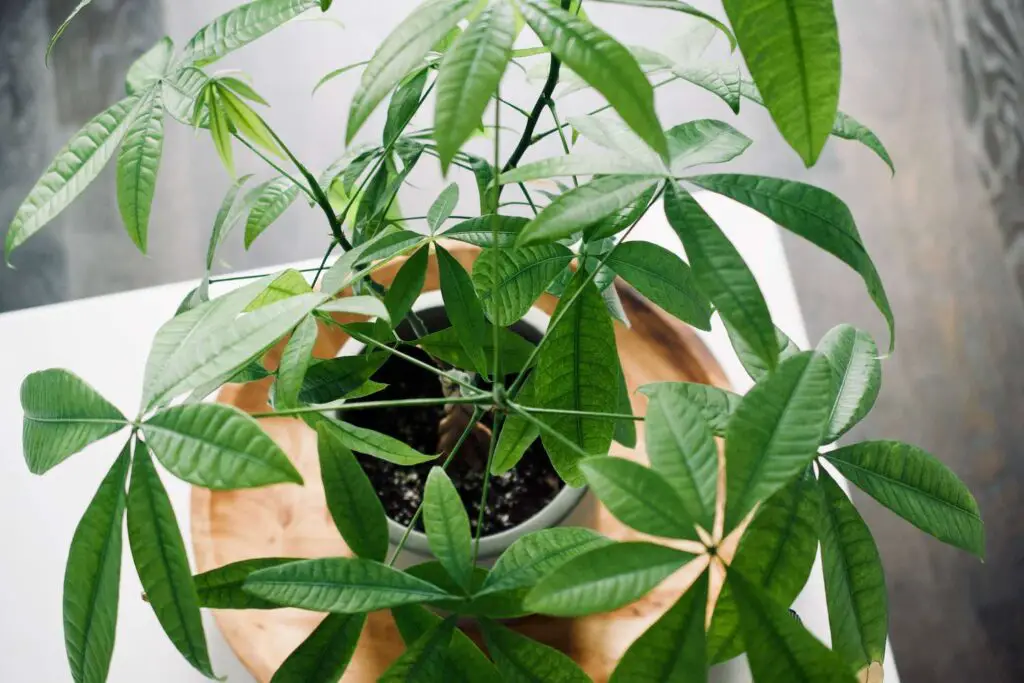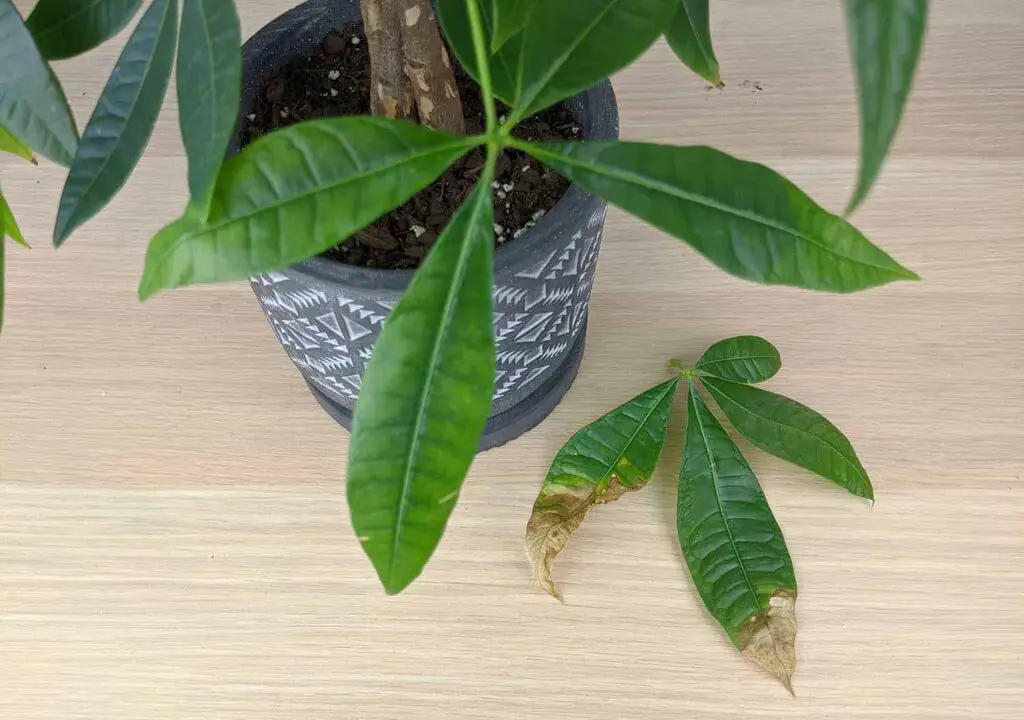To successfully place a Money Tree in a small apartment, consider bright, indirect light locations, keep the plant away from extreme temperatures, and choose decorative pots that complement your decor. Ensure the plant has enough space to grow without overcrowding other furniture or plants.
Understanding the Money Tree
The Money Tree, scientifically known as Pachira aquatica, is a popular houseplant known for its unique braided trunk and lush green leaves. This plant is often associated with good luck and prosperity in various cultures. Its adaptability makes it an ideal choice for small apartment spaces where light and space can be limited.

Money Trees thrive in indirect sunlight and prefer humid environments. This means they can flourish in areas of your apartment that receive filtered light, such as near a window with sheer curtains or in well-lit rooms. Understanding their specific needs will help you choose the best placement for your plant.
Choosing the Right Location
When selecting a spot for your Money Tree, there are several factors to consider. The right location can make a significant difference in the health and growth of your plant. Here are some tips to guide you:
- Light Requirements: Money Trees prefer bright, indirect light. Avoid placing them in direct sunlight, as this can scorch their leaves.
- Room Temperature: Maintain a consistent temperature between 65°F and 75°F (18°C – 24°C). Avoid drafts from windows or heating vents.
- Humidity Levels: These plants thrive in higher humidity. Consider using a humidifier or placing a tray of water near the plant to increase moisture.
- Accessibility: Position the plant where it can be easily accessed for watering and maintenance, but out of the way of high traffic areas.
Creative Placement Ideas
In small apartments, creative solutions can help maximize space while showcasing your Money Tree. Here are some inventive ideas for placement:

- Corner Spaces: Utilize empty corners in rooms. A tall Money Tree can fill vertical space and bring life to otherwise dull areas.
- Shelves: Place smaller Money Trees on bookshelves or floating shelves. This not only saves floor space but also adds greenery at different heights.
- Tables and Desks: A Money Tree can serve as a centerpiece on dining tables or desks. This adds aesthetic value while improving air quality.
- Window Sills: If you have a suitable window that offers filtered light, a window sill can be an excellent spot for your Money Tree.
Decorative Pots and Stands
The right pot can enhance the appearance of your Money Tree while also serving practical purposes. Here are some considerations for selecting pots and stands:
- Size: Choose a pot that allows for growth but is not too large for your space. A pot that is too big can lead to overwatering issues.
- Drainage: Ensure that the pot has drainage holes. Good drainage is critical to prevent root rot.
- Style: Select decorative pots that match your apartment’s decor style. From modern ceramics to boho wicker, the right pot can enhance your interior design.
- Plant Stands: Consider using plant stands to elevate your Money Tree. This adds height and makes it a focal point in the room.
Caring for Your Money Tree
Caring for your Money Tree is essential for its longevity and health. Regular maintenance will ensure it continues to thrive in your small living space. Here are key care tips:
| Care Aspect | Recommendation |
|---|---|
| Watering | Water when the top inch of soil feels dry. Be cautious not to overwater. |
| Fertilizing | Use a balanced liquid fertilizer every month during the growing season. |
| Pruning | Trim any dead or yellowing leaves to promote healthy growth. |
By following these tips for placement and care, your Money Tree can become a stunning addition to your small apartment space. Its beauty and symbolism will enhance your living environment while bringing good fortune into your home.

Common Mistakes to Avoid
While placing and caring for your Money Tree, there are several common mistakes that can hinder its growth. Understanding these pitfalls will help you create a better environment for your plant. Here are key mistakes to avoid:
- Overwatering: One of the most common issues is overwatering. Ensure that you allow the top inch of soil to dry out before watering again. Overwatering can lead to root rot.
- Ignoring Light Needs: Placing your Money Tree in direct sunlight can damage its leaves. Always opt for locations with bright, indirect light.
- Neglecting Humidity: Money Trees thrive in humid conditions. If the air in your apartment is too dry, consider misting your plant or using a humidity tray.
- Using the Wrong Soil: A potting mix that retains too much moisture can harm your plant. Use a well-draining potting mix designed for houseplants.
Enhancing Aesthetics with Accessories
In small spaces, aesthetics play a significant role in how a plant fits into the overall decor. Here are some ideas to enhance the appearance of your Money Tree with various accessories:
Decorative Planters
Selecting the right planter can make a significant difference in how your Money Tree looks in your home. Consider these tips when choosing decorative planters:
- Color Coordination: Choose colors that complement your existing decor. Neutral tones work well in most settings, while bold colors can create a striking focal point.
- Material Matters: Different materials, such as ceramic, metal, or wood, can convey varying styles. Pick a material that aligns with your apartment’s theme.
- Size Appropriateness: Ensure the pot is appropriately sized for your Money Tree. It should be large enough to allow for growth but not so large that it overwhelms the space.
Plant Stands and Shelves
Using plant stands or shelves can elevate your Money Tree and free up floor space. Here are some options to consider:

- Multi-Tiered Plant Stands: These stands allow you to display multiple plants at varying heights, creating visual interest.
- Wall-Mounted Shelves: Install shelves at different heights to showcase your Money Tree while saving floor space.
- Rolling Carts: A rolling cart can provide mobility, allowing you to move your Money Tree closer to light sources as needed.
Companion Plants for Your Money Tree
If you are thinking about adding more greenery to your small apartment, consider companion plants that thrive alongside your Money Tree. Here are some great options:
- Pothos: This hardy plant is easy to care for and thrives in similar light conditions. Its trailing vines can complement the upright growth of the Money Tree.
- Snake Plant: Also known as Mother-in-Law’s Tongue, this plant requires minimal care and can add architectural interest to your plant collection.
- Peace Lily: Known for its beautiful white blooms, the Peace Lily thrives in similar humidity levels and can enhance the air quality in your home.
Seasonal Care Adjustments
Caring for a Money Tree requires different approaches based on seasonal changes. Here’s how to adjust care throughout the year:
Spring and Summer
During these warmer months, your Money Tree will be in its active growth phase. Here are some care tips:
- Increase Watering: As temperatures rise, the soil may dry out faster. Monitor moisture levels and water more frequently as needed.
- Fertilization: Continue using balanced liquid fertilizer once a month to support growth during this period.
- Pest Monitoring: Warmer weather can attract pests. Regularly inspect your plant for signs of insects and treat as necessary.
Fall and Winter
The fall and winter months bring cooler temperatures and reduced light. Adjusting care practices will help your Money Tree thrive during this time:
- Reduce Watering: Decrease watering frequency as the plant enters dormancy. Allow the top two inches of soil to dry out before watering.
- Lower Fertilization: Stop fertilizing during the winter months as the plant’s growth slows down.
- Provide Adequate Light: Ensure that your plant receives as much indirect light as possible during shorter days. Consider using grow lights if necessary.
By avoiding common mistakes, utilizing accessories for aesthetic enhancement, selecting suitable companion plants, and adjusting care seasonally, you can create a thriving environment for your Money Tree in a small apartment setting.
Understanding Money Tree Growth Patterns
To effectively care for your Money Tree, it’s essential to understand its growth patterns. Knowing how this plant grows will help you make informed decisions about its placement and care. Here are some important aspects to consider:
Growth Rate
Money Trees are known for their relatively fast growth rate, especially when provided with optimal conditions. In the right environment, they can grow several inches each year. This rapid growth means you will need to repot your plant periodically to give it enough space for its roots to expand.
Height and Width
Typically, a Money Tree can reach heights of up to six feet under the right conditions. In smaller spaces, you may want to manage its height through pruning or by choosing a smaller variety. The width can also expand significantly, so ensure you account for both dimensions when selecting a location.
Root Development
The root system of a Money Tree is extensive. It prefers a pot that allows for ample drainage and room to grow. To promote healthy root development:
- Choose the Right Pot Size: Start with a pot that is slightly larger than the current one. Avoid overly large pots that can hold excess moisture.
- Repotting: Repot your plant every two to three years or when you notice roots growing out of the drainage holes.
- Use Well-Draining Soil: A potting mix containing perlite or sand can help ensure good drainage and aeration for the roots.
Placement Strategies for Small Spaces
In small apartment settings, optimal placement is crucial for the health of your Money Tree. Here are some effective strategies to maximize its presence without overcrowding your space:
Vertical Space Utilization
Utilizing vertical space is essential in small apartments. Here are ways to make the most of it:
- Hanging Planters: Consider using hanging planters in windows or from ceilings to create an eye-catching display.
- Shelf Displays: Use tall bookshelves or shelving units to place your Money Tree at different heights, adding depth to your decor.
- Wall-Mounted Planters: Install wall-mounted planters to save floor space while still showcasing your Money Tree.
Strategic Room Placement
Choosing the right room for your Money Tree can significantly affect its growth. Here are some suggestions:
- Living Room: This is often the brightest room in an apartment. Place your Money Tree near a window where it can receive indirect sunlight.
- Home Office: Having plants in a workspace can enhance mood and productivity. A Money Tree on your desk can be both decorative and beneficial.
- Bathroom: If your bathroom has a window, it can provide the humidity that Money Trees enjoy. Just ensure it gets adequate light.
Caring for Your Money Tree in Unique Spaces
If you
have unique living arrangements or spaces, such as studio apartments or shared rooms, here are some tailored care tips:
Studio Apartments
In studio apartments where space is limited, consider these tips for integrating your Money Tree:
- Multi-Functional Furniture: Use furniture that doubles as storage or display space for your plant to minimize clutter.
- Create Zones: Use your Money Tree to define areas within the studio, such as separating the sleeping area from the living area.
- Light Sources: Position your plant near additional light sources like floor lamps to ensure it receives enough light.
Shared Living Spaces
If you share your apartment, here’s how to keep your Money Tree healthy while respecting communal areas:
- Communicate with Roommates: Discuss plant care responsibilities with your roommates to ensure consistent watering and maintenance.
- Avoid High-Traffic Areas: Place your Money Tree in a corner or less-traveled area to prevent accidental damage.
- Personalize Your Space: Use decorative pots that reflect your style, making your plant a personal touch in shared areas.
Monitoring Plant Health
Your Money Tree is a living organism that needs regular monitoring for signs of health. Here’s what to look out for:
Leaf Health
The condition of the leaves is often the first indicator of a plant’s health. Pay attention to:
- Yellowing Leaves: This may indicate overwatering or insufficient light. Adjust care methods accordingly.
- Browning Tips: Browning leaf tips can signal underwatering or low humidity levels.
- Pest Infestation: Regularly check for pests like spider mites or aphids on leaves. If found, treat them promptly with insecticidal soap or neem oil.
Soil Condition
The soil condition is crucial for root health. Look for signs such as:
- Mold or Fungi: These may indicate overwatering or poor drainage. Ensure proper potting soil and drainage holes are present.
- Packed Soil: If the soil becomes hard and compacted, consider repotting with fresh soil.
By understanding growth patterns, utilizing strategic placements, and monitoring health, you can create an ideal environment for your Money Tree in a small apartment setting.
Additional Tips for Success
Alongside
the previously discussed strategies, incorporating a few more tips can further enhance your experience with your Money Tree. These suggestions will help you maintain a thriving plant while also complementing your small apartment’s decor.
Seasonal Decorations
One engaging way to elevate your Money Tree’s presence is by adapting its display with seasonal decorations. Here are some ideas:
- Spring: Use pastel-colored pots or add decorative stones on the soil surface to reflect the season of renewal.
- Summer: Incorporate bright, tropical colors in your potting accessories, like colorful saucers or vibrant plant stands.
- Fall: Surround your Money Tree with small pumpkins or gourds to celebrate the autumn season.
- Winter: Decorate with twinkling fairy lights around the base or add a festive pot cover for the holidays.
Educational Opportunities
Caring for your Money Tree can also be an educational experience. Consider the following:
- Learning About Plant Care: Research different aspects of plant care, such as propagation techniques, to expand your gardening knowledge.
- Inviting Friends Over: Host a plant care workshop with friends to share tips and tricks on keeping houseplants healthy.
- Documenting Growth: Keep a journal documenting your Money Tree’s growth and health over time. This can help you identify patterns and improve care.
Creating a Plant Care Routine
A consistent care routine can simplify the maintenance of your Money Tree. Here are aspects of a plant care schedule to consider:
- Weekly Water Check: Set a day each week to check soil moisture. This helps avoid overwatering or underwatering.
- Monthly Fertilization: Mark your calendar for monthly fertilization during the growing season to ensure healthy growth.
- Seasonal Inspections: Conduct thorough inspections for pests and diseases at the start of each season to catch issues early.
Final Thoughts
The Money Tree is not only a beautiful addition to any small apartment, but it also serves as a symbol of prosperity and good luck. By understanding its growth patterns, ensuring optimal placement, and providing attentive care, you can cultivate a vibrant and healthy plant that enhances your living space.
Incorporating creative strategies and maintaining a consistent care routine will allow you to enjoy the benefits of having a Money Tree while seamlessly integrating it into your home decor. Remember that each plant has its unique personality; therefore, be patient and attentive as you discover what works best for your Money Tree.
Ultimately, with the right approach, your Money Tree can thrive in even the smallest of apartments, providing joy and greenery in your life for years to come. Embrace the journey of nurturing this plant and enjoy every step along the way.
